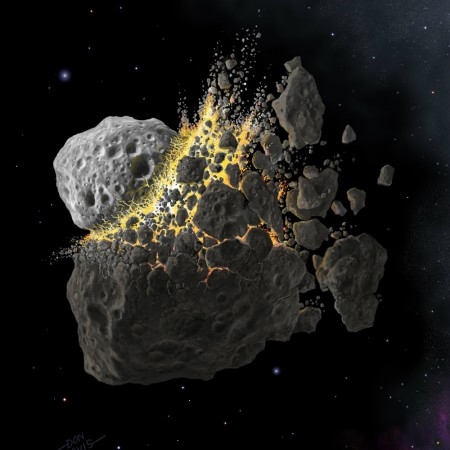
NASA plans to launch a new infrared telescope to detect near-earth objects (NEOs) on a collision course with the Earth, following its failure to perceive this summer an asteroid that speeded just 65,000 kilometers from the blue planet -- the largest space rock to come so close in a century.
The Near-Earth Object (NEO) Surveillance Mission costing between $500 million and $600 million will be launched by the middle of the next decade after it was first proposed some 15 years ago, NASA's associate administrator for science in Washington, Thomas Zurbuchen, told an advisory panel meeting.
The latest move comes after the agency supported ATLAS telescope, which picked up asteroid "2019 OK" on July 21, found it too obscured by clouds to be identified as a Near-Earth Asteroid (NEA). It was later spotted just 24 hours before it had a narrow miss with the Earth.
"Because there may be media coverage tomorrow, I'm alerting you that in about 30 mins a 57-130 meter-sized asteroid will pass Earth at only 0.19 lunar distances (~48,000 miles)," BuzzFeed News quoted NASA's planetary defense officer Lindley Johnson as telling other space agency experts in a July 24 email alert.
"The telescope will likely end up with a different name, but the mission is the same," said Mark Sykes, CEO of the Planetary Science Institute in Tucson and a member of NEOCam's science team.
The NASA and Congress are at loggerheads over the funding of NEOcam mission to watch "potentially hazardous" asteroids when lawmakers in 2005 ordered the space agency to detect 90 percent of hazardous asteroids but could not provide funds, a June report by the US National Academies of Sciences concluded.
An infrared telescope is essential, according to researchers, as dark asteroids, which are nearly invisible in visible light but stand out in infrared, are more abundant than ever now. "There are a lot of really dark asteroids out there," Jay Melosh, a planetary scientist at Purdue University in West Lafayette, Indiana, said.
Unlike its predecessor Wide-field Infrared Survey Explorer (WISE), NEOCam sensors will be functional even without active refrigeration when parked at L1, a stable vantage point balanced between the gravity of Earth and the sun.
It is, however, unclear whether or not NEOCam would have detected "2019 OK", though it will also study asteroids under the 140-meter threshold.









